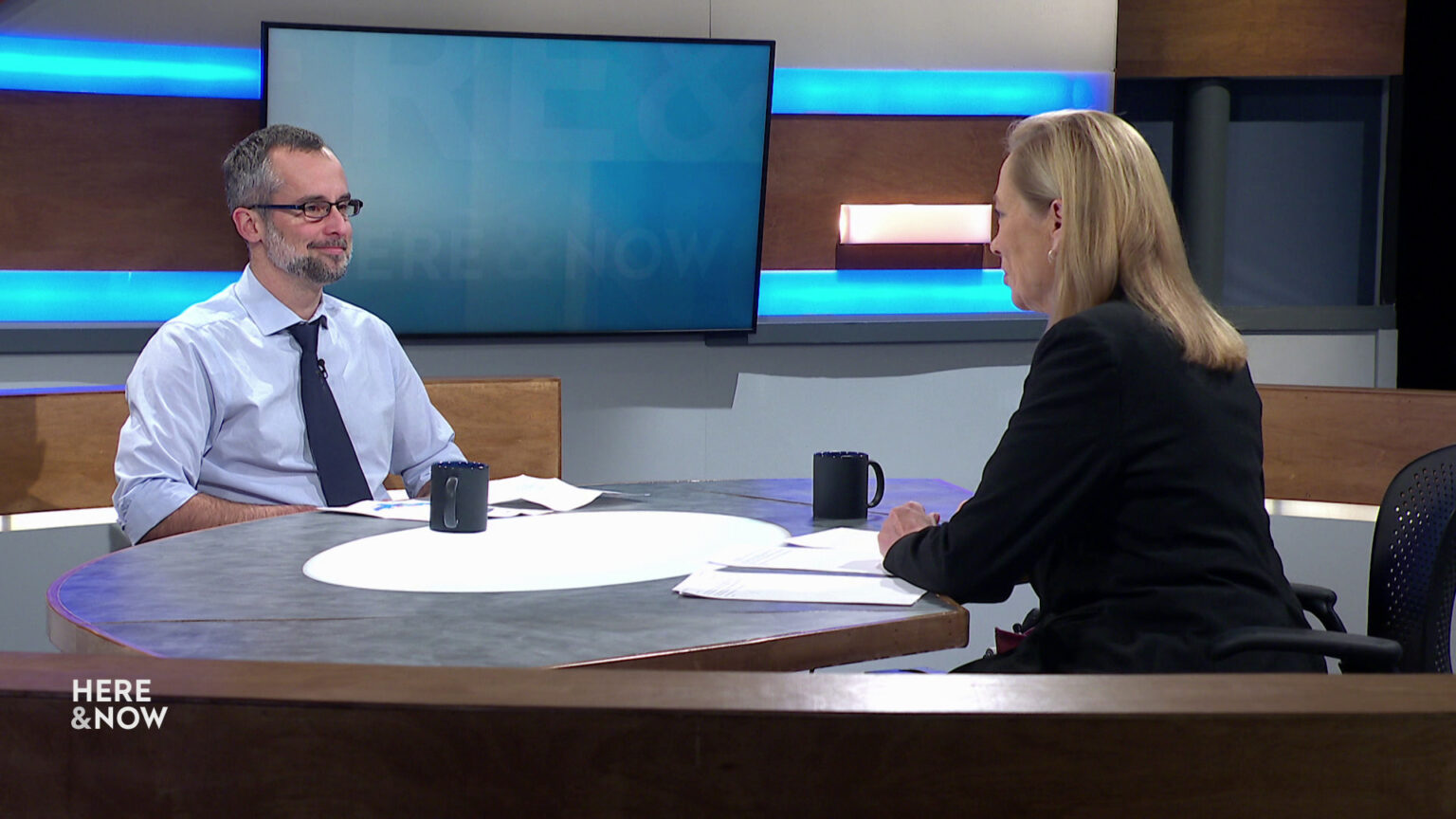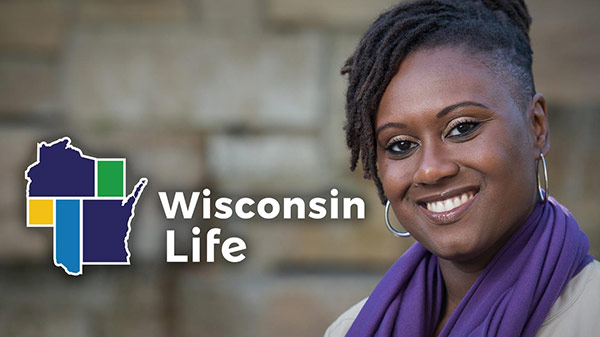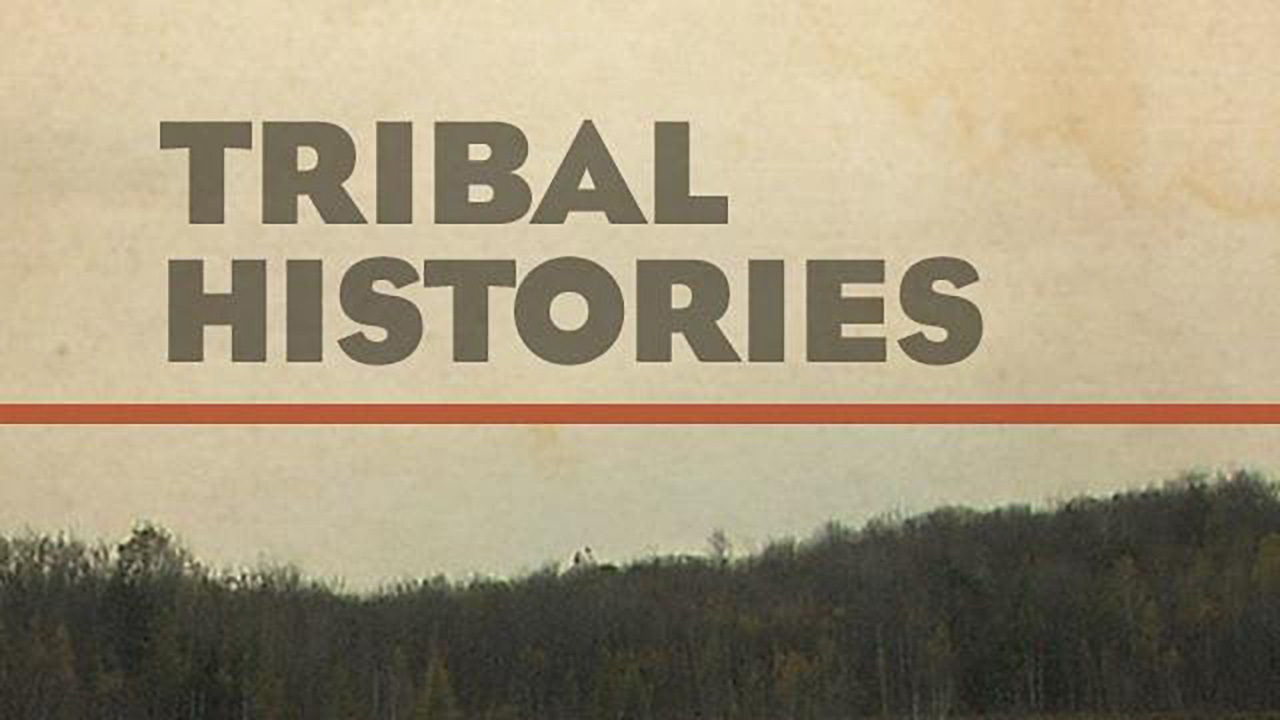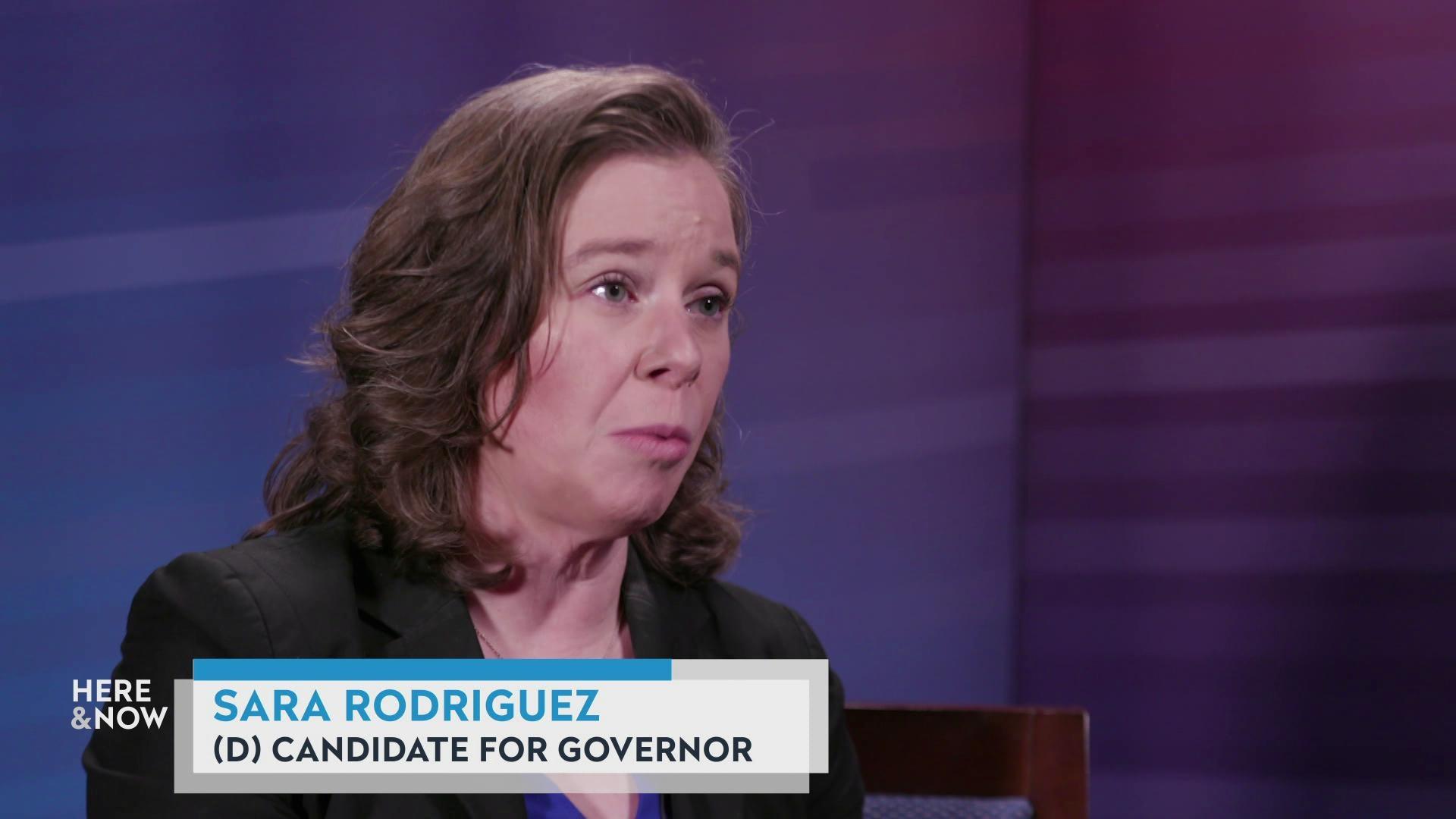'Here & Now' Highlights: Mark Sommerhauser, Justin Sydnor, Charles Franklin, Jeff Pritzl
Here's what guests on the Nov. 21, 2025 episode said about online sports betting, health insurance costs, early polling for the 2026 elections, and Wisconsin's gun deer hunt opener.
By Frederica Freyberg | Here & Now
November 24, 2025

Frederica Freyberg and Mark Sommerhauser (Credit: PBS Wisconsin)
Online sports betting has exploded across the country. and proposed legislation envisions Wisconsin getting into the game — Wisconsin Policy Forum researcher Mark Sommerhauser said other states that legalized it have realized millions of dollars in tax revenue. The politics of the Affordable Care Act and its enhanced subsidies can obscure the facts — Justin Sydnor, a professor at the Wisconsin School of Business, laid out examples of how premiums can increase. Marquette Law School Poll Director Charles Franklin said a November national survey showed extreme drops in President Donald Trump’s favorability among independents. Nov. 22 marked opening day of Wisconsin’s gun deer hunting season, and Jeff Pritzl of the state Department of Natural Resources said he expects just shy of 600,000 hunters to take part.
Mark Sommerhauser
Policy researcher, Wisconsin Policy Forum
- AB 601 is a bill that would legalize online sports betting outside tribal casinos in Wisconsin that was on a fast track for a state Assembly vote when it was abruptly pulled from the calendar. Despite there being bipartisan support for such a measure – including the governor’s if it includes tribal consultation – there is also stiff opposition. Still, if approved, Sommerhauser said Wisconsin would join 38 states where online sports betting is now legal.
- Sommerhauser: “What we know from our research is that we have looked at some other states that have legalized online sports betting. As you alluded, there’s been dozens and dozens of states that have done that just in the last few years. And they have, in some cases, seen quite large infusions of revenue. Of course, a lot of it depends on how — the extent to which it’s taxed. And we see from state to state, there are huge variations in that, from 5% to 50%. taxes. So the rate differs hugely. In states that have a high tax rate and in larger states, it can be on the order of hundreds of millions of dollars in tax revenue a year. Again, that’s on the very high end, and that’s with a very high tax rates. So that’s not necessarily something that could be extrapolated to Wisconsin, but it does give you a sense of what some states can see.”
Justin Sydnor
Professor of risk and insurance, Wisconsin School of Business
- Extending enhanced tax credits for Affordable Care Act Health Insurance Marketplace plans was what Democrats were holding out for in the government shutdown that ended on Nov. 12. The continuing resolution put forth by Republican lawmakers ended up passing without that extension, and ACA policyholders are girding for premium hikes that could more than double. Sydnor said the level of increases would depend on income, age and type of plan, but said it is not in dispute that premiums could more than double.
- Sydnor: “There’s really no uncertainty about that — it’s basically pretty straightforward, simple math. The way the tax credits work is that they’re tied to a share of the percent of your income, and the enhanced tax credits increased or decreased the share you would have to pay, and increase the income range for people who are eligible. So they’ll definitely go up. The share that you’re responsible for paying goes up if those subsidies expire — how much depends a lot on your income level. And in particular, we could maybe think about a nice example here. So take a 50-year-old couple, married couple in Wisconsin, 50 years old, no children. They’re facing a total premium of about $18,000 for a middle plan this year in the ACA marketplace in Wisconsin. If they had the enhanced tax credits and they made $85,000 or more a year, that’s 400% of the federal poverty line, they’d get about a $11,000 subsidy and they’d have to pay about $7,000 themselves. So if those subsidies expire, they’re on the hook for that whole $18,000. So that’s an $11,000 increase. Now, for people who have lower incomes, the subsidies protect them more, even if the enhanced subsidies expire. So let’s take that same family and move them way down the income spectrum — make them at $25,000. Now they’re just above the poverty line. In the enhanced subsidies, they don’t pay anything for that middle-tier plan. They’re paying zero, but without them, they’re paying about $500 a year, so about a $500 increase. So that range, you know, in the ballpark sum, it’s $500.00 a year, some people, it is $10,000 or more a year.”
Charles Franklin
Director, Marquette Law School Poll
- Elections in early November in Virginia, New Jersey and other states saw Democrats sweeping Republican candidates. Franklin described how his poll released on Nov. 18 showed that of likely voters in the 2026 congressional elections, 44% would vote for Republicans while 53% would vote for Democrats. Among voters who are Independents, the poll showed 75% disapprove of President Donald Trump’s job performance, with 25% approving. Franklin said these results serve as warning signs for Republicans in upcoming Wisconsin elections.
- Franklin: “I think that what we saw in Virginia — to come back to a real election, not just a poll — is that we saw Republican incumbents lose seats in Virginia that Trump had won by six points last time. So our competitive states here, sorry, districts, legislative districts here, are within that kind of margin. Now I’m not for a minute saying that we will see the same here that we saw in Virginia. But Virginia is certainly a test case to show that that four=five-six-point swing, even in an incumbent district held by a Republican, is at risk this year.”
Jeff Pritzl
Deer specialist, Wisconsin Department of Natural Resources
- Nearly 600,000 hunters are expected to take part in Wisconsin’s nine-day gun deer hunting season, which runs from Nov. 22 through Nov. 30. Pritzl said there are some 2 million deer in Wisconsin, and pointed to the regions in the state that recently have been most favorable for hunters.
- Pritzl: “I always think that’s in the eye of the beholder because not all hunters are looking for the same. For the best chance to see deer and harvest deer, the counties in the state that perennially have the highest harvest densities are counties like Waupaca, Marquette, Green Lake — that east-central part of the state. We saw 13 counties, mostly in east central Wisconsin, have a record buck kill last year, and they’re probably gonna be in that same area this year. But if hunters that are looking for a different kind of experience, maybe a little more solitude and a lot of country to explore, you know, the northern forest offers that in spades with big chunks of state and federal properties. That’s where I’ll be this weekend — looking forward to that kind of an experience. I may not see as many deer, but that’s not everyone’s primary objective.”
Watch new episodes of Here & Now at 7:30 p.m. on Fridays.
 Passport
Passport











Follow Us